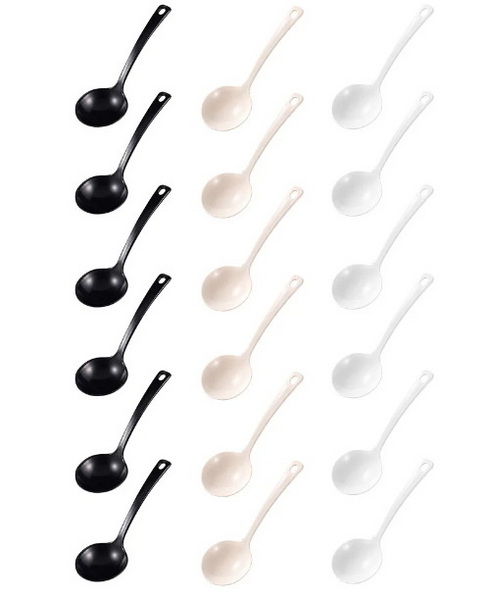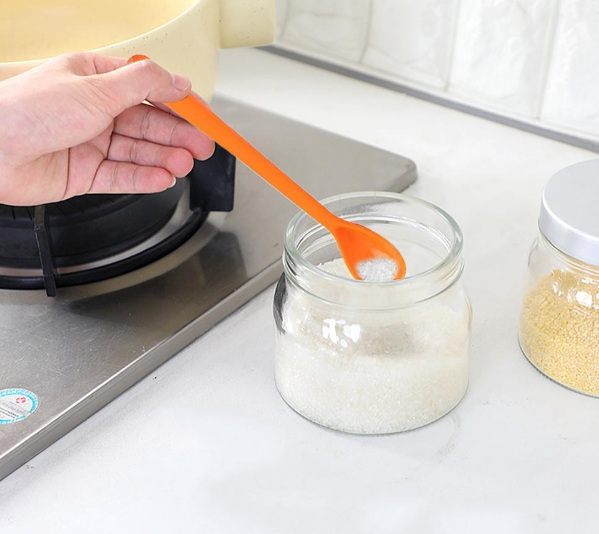
Content Menu
● Introduction to Disposable Soup Spoons
>> Plastic Disposable Soup Spoons
>>> Advantages:
>>> Disadvantages:
>> Biodegradable Disposable Soup Spoons
>>> Advantages:
>>> Disadvantages:
>> Bamboo Disposable Soup Spoons
>>> Advantages:
>>> Disadvantages:
● Choosing the Best Disposable Soup Spoon for Hot Liquids
>> Top Recommendations
● Practical Applications and Benefits
>> Environmental Impact
>> Innovations in Disposable Utensils
● Cultural Significance of Disposable Soup Spoons
>> Impact on Food Service Industry
● Conclusion
● FAQs
>> 1. What is the most eco-friendly disposable soup spoon material?
>> 2. Can disposable soup spoons be recycled?
>> 3. How do I choose the right size for a disposable soup spoon?
>> 4. Are bamboo disposable soup spoons durable?
>> 5. What certifications should I look for in biodegradable disposable soup spoons?
When it comes to serving hot soups, the choice of utensils can significantly enhance the dining experience. Disposable soup spoons are a convenient option for both home use and commercial settings, offering ease of cleanup and reducing the environmental impact associated with washing and maintaining traditional utensils. However, selecting the best disposable soup spoon for hot liquids involves considering several factors, including material, durability, and eco-friendliness.

Introduction to Disposable Soup Spoons
Disposable soup spoons are available in a variety of materials, each with its own set of advantages and disadvantages. The most common materials include plastic, biodegradable plant-based materials, and bamboo. Each type caters to different needs, whether it be cost-effectiveness, sustainability, or durability.
Plastic Disposable Soup Spoons
Plastic disposable soup spoons are lightweight and cost-effective, making them a popular choice for large events or food service operations. They are available in different types, such as polypropylene (PP) and polystyrene (PS), with PP being more flexible and heat-resistant, while PS offers a rigid structure suitable for sturdier requirements.
Advantages:
- Cost-Effective: Plastic spoons are generally cheaper than other materials.
- Lightweight: Easy to transport and store.
- Heat Resistance: Some types, like PP, can handle hot liquids well.
Disadvantages:
- Environmental Impact: Not biodegradable and contributes to plastic waste.
- Flexibility: Can bend or break under heavy use.
Biodegradable Disposable Soup Spoons
Biodegradable spoons are made from materials like sugarcane pulp, cornstarch, or potato starch. These options are more environmentally friendly as they can decompose naturally, reducing plastic waste and pollution. They are also compostable, which means they can be turned into nutrient-rich soil.
Advantages:
- Eco-Friendly: Reduces plastic waste and is compostable.
- Sustainable: Made from renewable resources.
- Heat Resistance: Some types can withstand hot liquids.
Disadvantages:
- Cost: Generally more expensive than plastic.
- Availability: May not be as widely available as plastic options.
Bamboo Disposable Soup Spoons
Bamboo spoons are another eco-friendly option, offering durability and a natural aesthetic. They are biodegradable and compostable, making them a sustainable choice for environmentally conscious consumers. Bamboo is a highly renewable resource, as it grows quickly and requires minimal water and pesticides.
Advantages:
- Durable: Stronger than many biodegradable materials.
- Eco-Friendly: Compostable and made from renewable resources.
- Aesthetic Appeal: Offers a premium look and feel.
Disadvantages:
- Cost: Can be more expensive than plastic or some biodegradable options.
- Availability: May not be as widely available as other materials.

Choosing the Best Disposable Soup Spoon for Hot Liquids
When selecting a disposable soup spoon for hot liquids, several factors should be considered:
1. Material: Choose materials that are heat-resistant and durable enough to handle hot soups without breaking or bending.
2. Durability: Ensure the spoon can withstand the temperature and texture of the soup.
3. Eco-Friendliness: Consider the environmental impact of the material.
4. Cost: Balance cost with the need for durability and sustainability.
5. Certifications: Look for certifications like EN 13432 for compostability or BPI Certified Compostable to ensure the spoons meet environmental standards.
Top Recommendations
- BioCane Sugarcane Pulp Spoons: These are made from reclaimed plant fibre and are suitable for hot soups like pho or laksa. They are a great alternative to plastic and are eco-friendly.
BioCane spoons are particularly popular in Asian cuisine, where soups are a staple. They are durable enough to scoop thick noodles and can withstand the high temperatures of soups like ramen or udon.
- World Centric TPLA Compostable Spoons: Made from non-GMO corn-derived polylactic acid (TPLA), these spoons are sturdy, reusable, and compostable. They are ideal for serving both hot and cold foods, making them versatile for various dining settings.
TPLA spoons are known for their strength and resistance to heat, making them suitable for soups with high temperatures. They are also dishwasher safe, which can extend their lifespan if reused.
- Bamboo Asian Soup Spoons: These offer a durable and eco-friendly option with a natural aesthetic, suitable for hot soups and noodle dishes. Bamboo spoons are often preferred in traditional Asian settings due to their cultural significance and environmental benefits.
Bamboo spoons can be used multiple times if properly cleaned and stored, making them a cost-effective option for frequent users. They also add a touch of elegance to any dining table.
Practical Applications and Benefits
Disposable soup spoons are not only convenient but also offer several practical benefits:
- Event Use: Ideal for large events, festivals, or outdoor gatherings where washing facilities may be limited.
- Catering Services: Suitable for catering companies that need to serve soups in bulk without the hassle of washing utensils.
- Home Use: Convenient for families who prefer easy cleanup after meals.
Environmental Impact
The environmental impact of disposable soup spoons varies significantly depending on the material. Biodegradable and bamboo options significantly reduce plastic waste and contribute to a more sustainable future. However, plastic spoons, while cost-effective, contribute to the growing problem of plastic pollution.
Innovations in Disposable Utensils
The market for disposable utensils is evolving, with new innovations focusing on sustainability and functionality. Companies are developing spoons from innovative materials like seaweed or mushroom-based bioplastics, which offer even more eco-friendly alternatives.
Cultural Significance of Disposable Soup Spoons
Disposable soup spoons also hold cultural significance in various societies. In many Asian cultures, bamboo utensils are traditional and symbolize harmony with nature. Similarly, biodegradable spoons are becoming a symbol of modern sustainability efforts.
Impact on Food Service Industry
The food service industry benefits greatly from disposable soup spoons, as they simplify operations and reduce costs associated with utensil maintenance. This convenience allows businesses to focus on food quality and customer service.
Conclusion
Choosing the best disposable soup spoon for hot liquids involves balancing factors such as durability, eco-friendliness, and cost. Whether you opt for plastic, biodegradable, or bamboo spoons, each material has its advantages and disadvantages. For those prioritizing sustainability, biodegradable and bamboo options are excellent choices. For cost-effectiveness, plastic remains a viable option, though it lacks in environmental benefits.

FAQs
1. What is the most eco-friendly disposable soup spoon material?
The most eco-friendly disposable soup spoon materials are biodegradable options made from plant-based materials like sugarcane pulp or bamboo. These materials reduce plastic waste and are compostable.
2. Can disposable soup spoons be recycled?
Most plastic disposable soup spoons cannot be recycled unless they are made from recyclable materials. Biodegradable spoons require proper composting facilities to decompose.
3. How do I choose the right size for a disposable soup spoon?
Choose a spoon size that matches its intended use. Standard-sized spoons are suitable for general dining, while larger spoons may be needed for soups with bulky ingredients.
4. Are bamboo disposable soup spoons durable?
Yes, bamboo disposable soup spoons are generally durable and can withstand hot liquids. They are also biodegradable and compostable.
5. What certifications should I look for in biodegradable disposable soup spoons?
Look for certifications like EN 13432 for compostability or BPI Certified Compostable to ensure the spoons meet environmental standards.

















